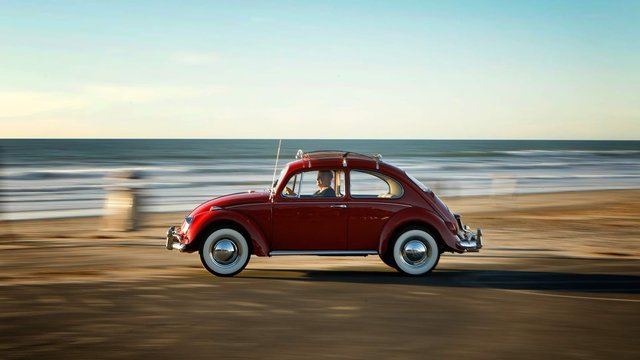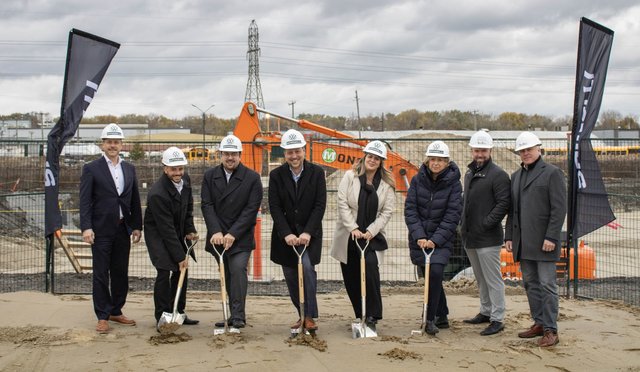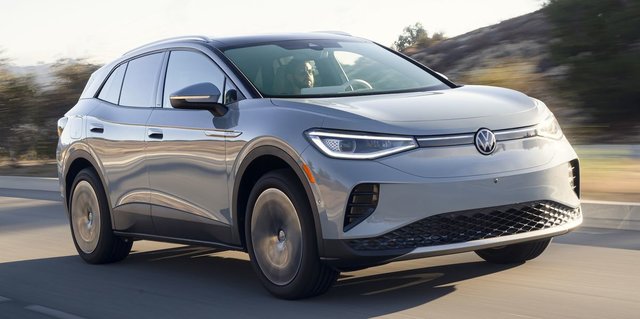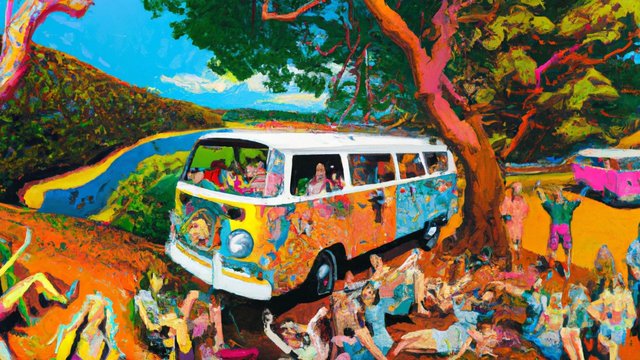Delve into the rich history of the Volkswagen Beetle, exploring its origins, rise to fame, and impact on popular culture. Discover the car's enduring appeal as a symbol of innovation, simplicity, and individualism, and join us as we look toward its potential future as an electric icon for the 21st century. This compelling article pays tribute to the Beetle's legacy and offers a hopeful glimpse into what might lie ahead for this beloved automobile.
There are few cars in history that can boast the level of admiration and affection that the Volkswagen Beetle has garnered. With its distinctive rounded shape, friendly face, and air of nostalgia, the Beetle has captured the hearts of generations of drivers around the globe. For decades, it has been an emblem of simplicity, affordability, and reliability, transcending its origins as a mass-produced car for the German people to become a beloved icon worldwide.
But what is it about the Volkswagen Beetle that has allowed it to endure and thrive for so long, while countless other vehicles have come and gone? Is it the Beetle's iconic design that continues to evoke a sense of whimsy and delight? Or is it the enduring spirit of individuality and freedom that it represents, a spirit that has resonated with millions of drivers since its inception?
The Beetle as a Cultural Icon
From its humble beginnings in Nazi Germany to its association with the counterculture movement of the 1960s, the Volkswagen Beetle has managed to stay relevant and beloved in a rapidly changing world. Its presence in popular culture – from the lovable "Herbie the Love Bug" to its starring roles in countless movies, television shows, and commercials – has cemented the Beetle's status as a true cultural icon.
But the Beetle's impact extends beyond the realm of entertainment; it has also played a significant role in shaping the automotive industry, pioneering the concept of a "people's car" that was accessible, affordable, and reliable. As we delve into the fascinating history of the Volkswagen Beetle, we'll explore the factors that contributed to its lasting appeal and its enduring status as a symbol of innovation, simplicity, and individualism.
In the following sections, we will trace the Beetle's journey from its origins to its heyday on American soil, examine its influence on popular culture, and consider what the future may hold for this beloved automotive icon. Through this exploration, we will come to understand not only the enduring appeal of the Volkswagen Beetle but also the indelible mark it has left on our collective consciousness.
The Origins: The Birth of the Beetle
The Vision of Ferdinand Porsche and Adolf Hitler
The story of the Volkswagen Beetle begins in the 1930s with a meeting of two formidable minds: automotive engineer Ferdinand Porsche and Germany's then-Chancellor, Adolf Hitler. At the time, the automobile industry was primarily focused on producing luxury vehicles for the elite, leaving the majority of the population without an affordable option. Hitler envisioned a "people's car" – a simple, reliable, and cost-effective vehicle that would enable ordinary Germans to enjoy the freedom and mobility of car ownership. To bring this vision to life, he enlisted the expertise of Ferdinand Porsche, a gifted engineer with a reputation for innovative design and a passion for efficiency.
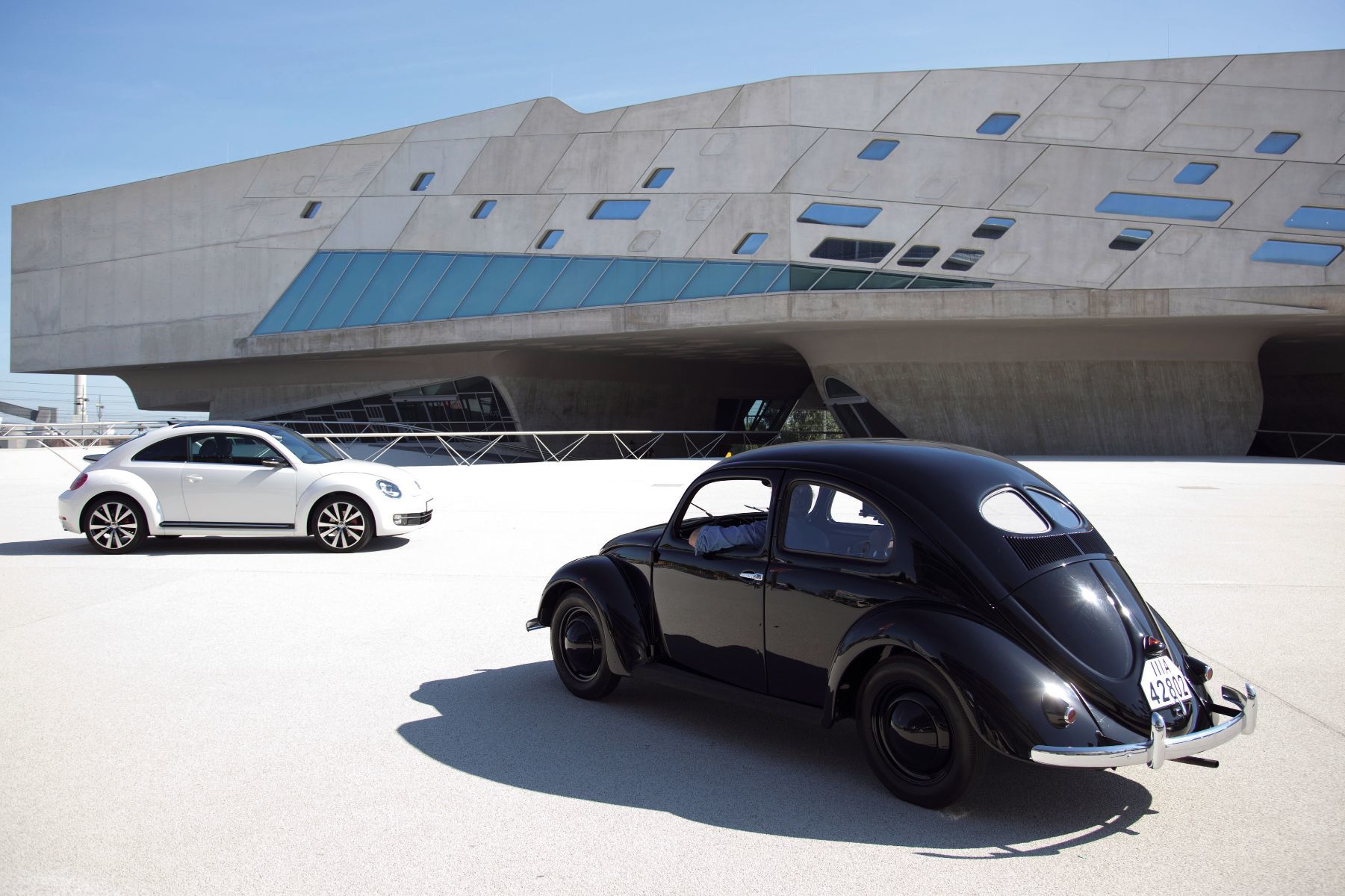
The Influence of the Tatra V570 and Other Early Designs
To create the people's car, Porsche drew inspiration from various existing models and designs, including the Czechoslovakian Tatra V570. The Tatra, designed by Hans Ledwinka, was an advanced vehicle for its time, featuring an air-cooled rear-engine layout, a streamlined body, and a focus on simplicity and efficiency. Porsche also looked to his own earlier designs, such as the Type 12 and Type 32, which featured many of the elements that would later define the Beetle – a lightweight chassis, rear-mounted engine, and aerodynamic shape.
The Creation of the Volkswagen Brand and the First Beetle Prototype
With these influences in mind, Porsche and his team set to work on creating the first Volkswagen prototype, known as the Type 60. The car, which would later become the Volkswagen Beetle, had to meet a specific set of requirements laid out by Hitler: it needed to be capable of carrying two adults and three children, have a top speed of 100 kilometers per hour (62 miles per hour), and achieve a fuel efficiency of 7 liters per 100 kilometers (33 miles per gallon). Additionally, the car had to be affordable, with a target price of no more than 1,000 Reichsmarks.
The first Beetle prototype, the VW Type 60, was completed in 1935. With its rounded shape, air-cooled engine, and simple yet innovative design, it met all of the requirements and laid the foundation for the Volkswagen brand. Despite the turbulent times and the outbreak of World War II, the vision for the people's car persisted, and in 1938, the Volkswagen factory in Wolfsburg was built to begin mass production of the Beetle. The war would delay the widespread availability of the car, but the foundation had been laid for what would become one of the most iconic and enduring automobiles in history.
Crossing the Atlantic: The Beetle Takes America by Storm
The Post-WWII Export Strategy
Following the end of World War II, Germany faced the immense task of rebuilding its shattered economy. One of the key strategies to achieve this was to boost exports, and the Volkswagen Beetle emerged as the perfect vehicle for the joDespite initial skepticism from American consumers, who were accustomed to larger and more powerful cars, the Beetle's affordability, reliability, and fuel efficiency soon caught their attention. Volkswagen's export-focused strategy paid off, and by the mid-1950s, the Beetle was becoming increasingly popular in the United States.
The Role of Innovative Advertising Campaigns
The "Think Small" Campaign by Doyle Dane Bernbach
One of the major factors contributing to the Beetle's success in America was its groundbreaking advertising campaign. In 1959, the New York-based advertising agency Doyle Dane Bernbach (DDB) launched the now-iconic "Think Small" campaign, which turned traditional automobile advertising on its head. Instead of promoting the Beetle's speed, power, or luxury, the campaign focused on its simplicity, efficiency, and practicality. The minimalist ads featured a small image of the Beetle with clever, witty copy that emphasized the car's uniqueness and reliability. The "Think Small" campaign resonated with American consumers and helped to transform the Beetle into a symbol of individualism and non-conformity.
Targeting Counterculture and Non-Conformity
In addition to the "Think Small" campaign, Volkswagen's advertising efforts also tapped into the growing counterculture movement of the 1960s. As more Americans began to question traditional values and societal norms, the Beetle's unconventional design and message of simplicity became increasingly appealing. The car became associated with the peace and love movement, and its popularity among young people, artists, and intellectuals further solidified its status as an icon of non-conformity.
The Beetle's Meteoric Rise to Fame in the U.S.
The combination of innovative advertising, a growing counterculture movement, and the Beetle's undeniable charm propelled the car to unprecedented heights in the United States. By the mid-1960s, the Beetle had become the best-selling foreign car in America, with sales exceeding 300,000 units per year. The Beetle's distinctive shape and sound became instantly recognizable, and its presence on American roads and highways served as a testament to its enduring appeal.
The Volkswagen Beetle's journey across the Atlantic illustrates the power of innovation, creativity, and persistence in the face of adversity. As the car took America by storm, it not only reshaped the automotive landscape but also captured the hearts and minds of millions of drivers, forever cementing its place in history as a true cultural icon.
Iconic Moments: The Beetle and Popular Culture
The Beetle in Film and Television
"Herbie the Love Bug" and the Enduring Legacy of the Anthropomorphic Beetle
The Volkswagen Beetle's unmistakable charm and appeal extend far beyond the realm of advertising and counterculture. One of the most memorable examples of the Beetle's impact on popular culture is the 1968 Disney film "The Love Bug," which introduced audiences to Herbie, a sentient Beetle with a mind of its own. Herbie quickly became a beloved character, starring in multiple sequels and a television series, and solidifying the Beetle's status as a cultural icon. The anthropomorphic car's endearing personality and on-screen antics captured the hearts of millions, reinforcing the idea that the Beetle was more than just a car – it was a friend, a companion, and a symbol of fun and adventure.
Cameo Appearances in Movies like "The Shining" and "Footloose"
Beyond Herbie, the Volkswagen Beetle has made numerous appearances in film and television, often serving as a subtle nod to its iconic status. In Stanley Kubrick's 1980 horror classic "The Shining," a yellow Beetle can be seen driving up the mountain to the infamous Overlook Hotel, while in the 1984 dance film "Footloose," a red Beetle plays a central role in the protagonist's journey to self-discovery. These and countless other cameo appearances speak to the enduring appeal of the Beetle, which has become a visual shorthand for a certain era, a specific feeling, or a shared sense of nostalgia.
The Beetle as a Symbol of the 1960s Counterculture
The Woodstock Festival and the Association with Peace and Love
The Volkswagen Beetle's connection to the counterculture movement of the 1960s is perhaps best exemplified by its association with the legendary Woodstock festival. As the ultimate celebration of peace, love, and music, Woodstock drew an estimated 400,000 people to upstate New York in August 1969. The Beetle became an emblem of the festival and the values it represented, with countless festival-goers arriving in their trusty VWs, often painted with psychedelic designs and adorned with flowers. The image of a colorful, flower-covered Beetle remains an enduring symbol of the era and the spirit of the 1960s counterculture.
The Beetle's Role in the Environmental Movement
Beyond its connection to peace and love, the Volkswagen Beetle also played a role in the nascent environmental movement of the 1960s and 1970s. As concerns about air pollution and resource depletion began to take center stage, the Beetle's small size, fuel efficiency, and relatively low emissions made it an appealing option for environmentally conscious consumers. The car's association with the counterculture further reinforced its status as an eco-friendly alternative to the gas-guzzling behemoths that dominated the American automotive landscape at the time.
In its various roles – from lovable movie star to emblem of peace and love to eco-friendly transportation option – the Volkswagen Beetle has left an indelible mark on popular culture. Its unique combination of simplicity, charm, and individualism has transcended generations, making it an enduring symbol of the values and ideals that it represents.
Evolution and Reinvention: The Modern Beetle
The Introduction of the New Beetle in 1998
As the years passed and automotive design evolved, the Volkswagen Beetle faced the challenge of remaining relevant in a rapidly changing world. In 1998, Volkswagen introduced the New Beetle, an updated version of the classic car that retained its iconic shape while incorporating modern features and technology. With its nostalgic appeal and updated amenities, the New Beetle captured the attention of both loyal fans and new generations of drivers. The car's return to the market was a testament to its enduring popularity and the power of nostalgia in driving consumer interest.
The 2012 Redesign and the Return to the Classic Silhouette
In 2012, Volkswagen unveiled another redesign of the Beetle, taking the car's evolution even further. This new iteration harkened back to the original Beetle's classic silhouette, with a flatter roofline, a more elongated shape, and a wider stance. The 2012 model also featured updated interior styling and advanced technology, offering drivers a modern take on the iconic car. This redesign demonstrated Volkswagen's commitment to preserving the Beetle's heritage while adapting to the demands of the contemporary automotive market.
The End of Production in 2019 and the Future of the Beetle
Despite its enduring charm and the various attempts to reinvent the car for a new era, the Volkswagen Beetle faced declining sales in the 2010s. In July 2019, the last Beetle rolled off the production line at Volkswagen's factory in Puebla, Mexico, marking the end of an era for the storied car. While the cessation of production was met with sadness and nostalgia from fans around the world, the Beetle's legacy as a cultural icon and automotive pioneer remains intact.
As for the future of the Beetle, rumors and speculation abound. Some suggest that Volkswagen may eventually reintroduce the car as an electric vehicle, in line with the company's commitment to sustainable transportation and its burgeoning electric lineup. While the details remain uncertain, the enduring appeal and rich history of the Volkswagen Beetle ensure that its spirit will continue to capture the hearts and minds of drivers for generations to come.
The Electric Resurgence: The Beetle Reimagined for the 21st Century
Volkswagen's Commitment to Electric Vehicles
In recent years, Volkswagen has made a strong commitment to electric vehicles (EVs) as part of its broader strategy to promote sustainable transportation and reduce its environmental impact. With the launch of its ID. series of electric cars, the company has signaled its intention to lead the charge in the transition from internal combustion engines to electric powertrains. As this shift continues, there is growing interest in how the Beetle, one of Volkswagen's most iconic and beloved models, might fit into this new era of electrification.
The Potential for an Electric Beetle Revival
Fan Renderings and Concept Designs
Though Volkswagen has not officially confirmed plans for an electric Beetle, the idea has captured the imagination of fans and automotive enthusiasts alike. Numerous renderings and concept designs have emerged online, showcasing various visions of what an electric Beetle might look like. These designs often merge the classic silhouette and styling of the original Beetle with modern features and technology, highlighting the car's potential as a nostalgic yet forward-looking EV.
The Role of Nostalgia in the Future of the Beetle
Nostalgia has always played a significant role in the enduring appeal of the Volkswagen Beetle, and this sentiment could prove crucial to its potential resurrection as an electric vehicle. As the automotive industry moves toward a more sustainable future, the idea of an electric Beetle offers a powerful combination of nostalgia and innovation. By harnessing the Beetle's iconic status and blending it with cutting-edge electric technology, Volkswagen could create a compelling and unique EV that resonates with both long-time fans and a new generation of environmentally conscious drivers.
The Implications for the Automotive Industry and the Broader Cultural Landscape
An electric Beetle revival would not only represent a significant milestone for Volkswagen but also have broader implications for the automotive industry and the cultural landscape. The Beetle's potential reemergence as an electric vehicle could demonstrate the enduring power of iconic designs, the importance of nostalgia in driving consumer interest, and the possibility for a seamless fusion of classic styling and modern technology.
Furthermore, the success of an electric Beetle could inspire other automakers to revisit their own classic models and reimagine them for the electric age. In this way, the Beetle's electric resurgence could play a role in shaping the future of the automotive industry, sparking a new wave of innovation and creativity that pays homage to the past while embracing the possibilities of a sustainable, electrified future.
Conclusion
The Lasting Impact of the Volkswagen Beetle on the Automotive World and Popular Culture
From its humble beginnings in pre-war Germany to its meteoric rise as a global cultural icon, the Volkswagen Beetle has left an indelible mark on the automotive world and popular culture. Its unmistakable silhouette, enduring charm, and innovative design have captivated generations of drivers, transcending time and geography to become a symbol of simplicity, individualism, and the power of creative thinking.
The Enduring Appeal of the Beetle as a Symbol of Innovation, Simplicity, and Individualism
The Volkswagen Beetle's enduring appeal is a testament to the enduring power of great design and the emotional connections that can form between people and the objects they love. In a world increasingly characterized by complexity and conformity, the Beetle's simplicity and distinctive character continue to resonate with drivers who value authenticity, creativity, and a sense of individuality.
A Tribute to the Legacy of the Iconic Beetle and a Hopeful Look Toward its Electric Future
As we celebrate the rich history and legacy of the Volkswagen Beetle, we also look toward the future with hope and anticipation. The prospect of an electric Beetle reimagined for the 21st century offers a tantalizing glimpse of what might be possible when innovation, nostalgia, and sustainability converge. While the details of the Beetle's electric future remain uncertain, the car's enduring spirit and the passionate devotion of its fans suggest that this iconic automobile may yet have a few surprises in store.
In the end, the Volkswagen Beetle's remarkable journey serves as a powerful reminder of the enduring power of great design, the importance of challenging conventional wisdom, and the limitless potential that can be unleashed when we dare to think small.


